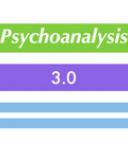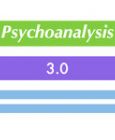
Sex
Brain Mapping Does Not Reveal What Turns a Woman On
Towards a marriage of sex research and contemporary psychoanalysis
Posted August 31, 2011

By Susan Kolod, Ph.D.
A recent brain imaging study, published in the July issue of the Journal of Sexual Medicine showed something women have known for years; stimulating one's clitoris, vagina, or nipples by hand or with a "personal device" can all be sexually exciting, but in very different ways.
The August 5th New Scientist in a piece titled "Sex on the brain: What turns women on, mapped out" says:
"The precise locations that correspond to the vagina, cervix and female nipples on the brain's sensory cortex have been mapped for the first time, proving that vaginal stimulation activates different brain regions to stimulation of the clitoris. The study also found a direct link between the nipples and the genitals, which may explain why some women can orgasm through nipple stimulation alone."
But does this mean we now know what turns women on? Or are any closer to understanding that mystery? Let's take a look.
In the study eleven women between the ages of 23-56 self-stimulated the clitoris, the vagina, and nipples. As the participants stimulated these areas, fMRI's showed that different areas of the sensory cortex lit up. Furthermore, they found that when the nipples were stimulated, it showed up not only in the region of the brain associated with the chest but in the genital region as well.
Among the interesting questions raised are whether other body parts can also be linked to the genital area of the sensory cortex. We know, for some, the ears, the nape of the neck, the navel or even the entire surface of the skin can be erogenous under certain conditions. But do those pleasures also light-up the genital area, or are nipples somehow unique? And what to do about the fact that sexual stimulation can also occur in the absence of any physical contact at all?
So does this study really show "what turns women on?" To be fair, the authors of the study do not claim to have answered this question; that comes from journalists. The researchers' aim was much more modest: To map the sensory cortical fields of these areas of the body toward a better understanding of the neural systems underlying sexual response. The study was not intended to illuminate what sparks desire and erotic feelings in women. Nor does it claim to shed any light on why some women are unable to achieve orgasm, or why some couples who were very turned on by each other at one time are no longer attracted, as Loretta Lynn sings, "when the tingle becomes a chill."
No matter how modest and well-conducted this study was, and the others that hopefully will follow, it is important to keep in mind that physical stimulation is only a small part of the complex question of what turns a woman on.
For example, the inability to achieve orgasm is a common complaint of female patients in psychotherapy and psychoanalysis, and it can be difficult to treat. It's not a matter of knowing which part of the anatomy to stimulate; contemporary women know about the importance of clitoral stimulation. Sometimes, a woman can achieve orgasm through self stimulation, but not with a partner. And sometimes the problem is with the partner—a partner who was once desired and desiring but isn't anymore.
To be useful for treating problems with sexuality, a study should try and account for the presence, or absence, of a sexual partner since the really interesting and complex aspects of sexuality and desire emerge within the context of a relationship. The role of interpersonal relationships, emotion, memory, unconscious processes, fantasy and trauma must be included in order to really understand what's going on, for example, when the "tingle becomes a chill."
Desire is difficult for anyone to define, and almost impossible to describe in the abstract. I feel sympathy and respect for researchers who remain undaunted and, nevertheless, try to measure and quantify that which has not yet been satisfactorily defined. But I also know that this is a place where contemporary psychoanalysis could help if our communities were in closer contact with each other.
If sex research were to illuminate what helps, and what blocks, someone from experiencing desire, they would achieve a major breakthrough in the treatment of sexual problems. The researches took a step in that direction at the end of their report when they suggested that an area for further research would be studying which areas of the brain are activated when genital stimulation is perceived as "erotic" vs. when it is perceived as "just pressure." Let's hope they also add when it is perceived as painful or repellent.
More generally, one way research such as this might better access desire would be to find out what the subjects were thinking as they stimulated themselves. What were the thoughts, feelings, images, stories, memories, etc.? Such reports of sexual fantasy can be a window opening on the structure of desire. And if they had asked them to report their thoughts and fantasies, it would have taken the researchers much farther into answering the question of "what turns women on."
Freud would have appreciated this study despite the fact that it called into question his theorizing that clitoral excitement is an immature sensation whose only value is to kindle vaginal excitement. He was a neurologist by training and frequently modified his theories when presented with new evidence. It would have been interesting to see him react to a finding that placed clitoral stimulation on an equal footing with vaginal, not to mention the erogenous potential for nipples. But he did not have today's technology, so he studied his theories through talk therapy alone. Today we have both: talk therapy and brain imaging technology. What's missing are rich, productive exchanges between sex researchers and those psychoanalysts plumbing the fault lines of 21st century sexual desire. And when I think about a possible marriage between sex research and contemporary psychoanalysis, well, I get that tingle that says we might be close to having answers for the question of "what turns a woman on."
--------
About the Author:
Susan Kolod, Ph.D. is a Supervising and Training Analyst at the William Alanson White Institute and is on the Faculty of the Manhattan Institute for Psychoanalysis. She has lectured and written about the impact of hormones on the psyche with a particular focus on menopause and the menstrual cycle. She is in private practice in Brooklyn and Manhattan.
© 2011 Susan Kolod, All Rights Reserved
http://www.psychologytoday.com/blog/psychoanalysis-30



